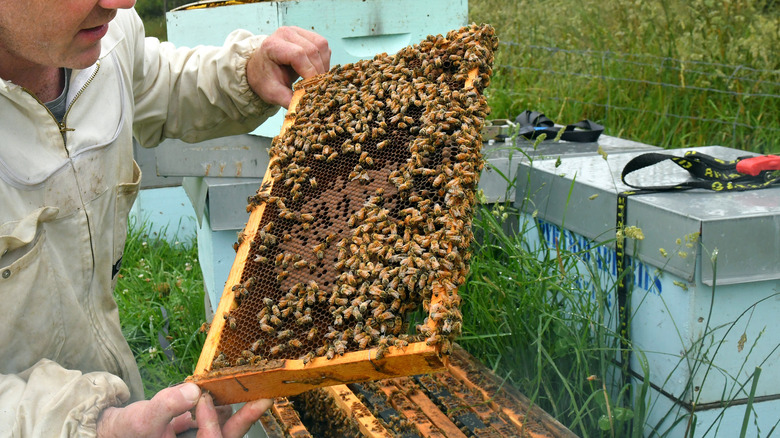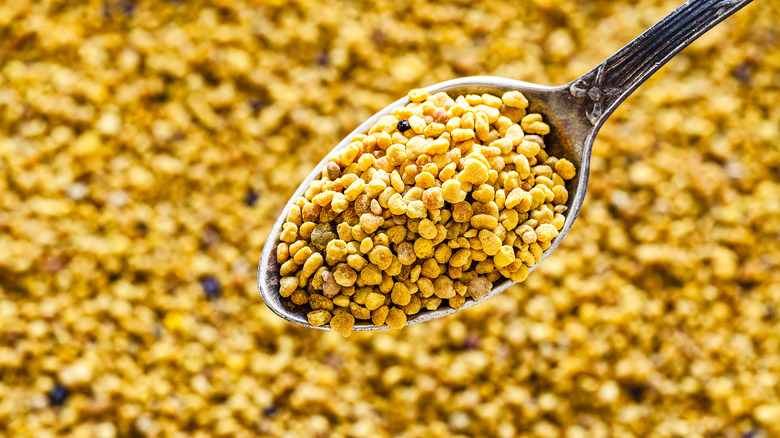The 2 Fancy Ingredients In Meghan Markle's Go-To Breakfast
If you closely follow the British royal family, you probably already know that Prince Harry likes British classics like Sunday roast and cottage pie but eschews American faves like pizza. You might also be familiar with the fact that the royal family's breakfasts include cheesy baked eggs for King Charles and the occasional beans on toast for Queen Camilla. Meghan Markle's favorites, though, are a little less classically British and a bit more trendy. This is fitting, as Markle grew up not in England, but in sunny Los Angeles, California.
As Hello Magazine reported in 2020, the Duchess of Sussex has long been a self-professed foodie and once ran a blog where she shared her own recipes. One of those recipes was for her go-to breakfast açaí bowl. Markle's recipe includes many staple items you'd expect, like an açaí packet, almond milk, and fruit. The recipe then calls for a few more surprising, slightly fancier ingredients that are definitely befitting of a duchess: manuka honey and bee pollen.
What is manuka honey?
So, what's so special about manuka honey, and why would Meghan Markle choose to use it over the honey that comes in a bear-shaped bottle? To put it simply, the manuka variety is VIP honey. For proof, you just have to look at the price: At Walmart, an 8.8-ounce jar of manuka honey goes for $19.97, whereas that little plastic bear, sold under Walmart's Great Value banner, comes in at $3.94 for 12 ounces. As for taste, manuka honey offers a richer, more intense flavor than more standard varieties and includes notes like caramel and toffee. Where this honey really stands apart, though, is in its health properties.
Manuka honey comes from New Zealand and is produced by bees that pollinate the manuka bush. This special combination gives the honey a few extra benefits, most notably high levels of methylglyoxal. A 2010 study published in Evidence-Based Complementary and Alternative Medicine found that manuka honey contains up to 100 times the amount of methylglyoxal found in conventional honey. These high levels mean that the honey also contains significant antibacterial properties, so much so that, according to Cleveland Clinic, the FDA has given manuka honey the green light to be used in treating wounds.
What is bee pollen?
You probably already know what bee pollen is (if you don't, it's a mix of flower pollen found on bees and in their saliva that's collected from beehives), but did you know that you can eat it? There are many reasons why Meghan Markle might be adding bee pollen to her açaí bowls — it adds a crunchy texture and a slightly sweet, earthy flavor. As with manuka honey, though, its health benefits take center stage. Bee pollen is high in antioxidants, and it may be able to aid both high cholesterol and inflammation.
Worth noting, however, is that bee pollen, which contains bee secretions, isn't safe for everyone. Just as some people are allergic to bees, others are also allergic to bee pollen. If someone who's allergic consumes bee pollen, they may experience a reaction, including anaphylaxis. So, if you want to live the life of a royal by making your own smoothie açaí bowl with a few extra-fancy ingredients, take care to observe the risks.


